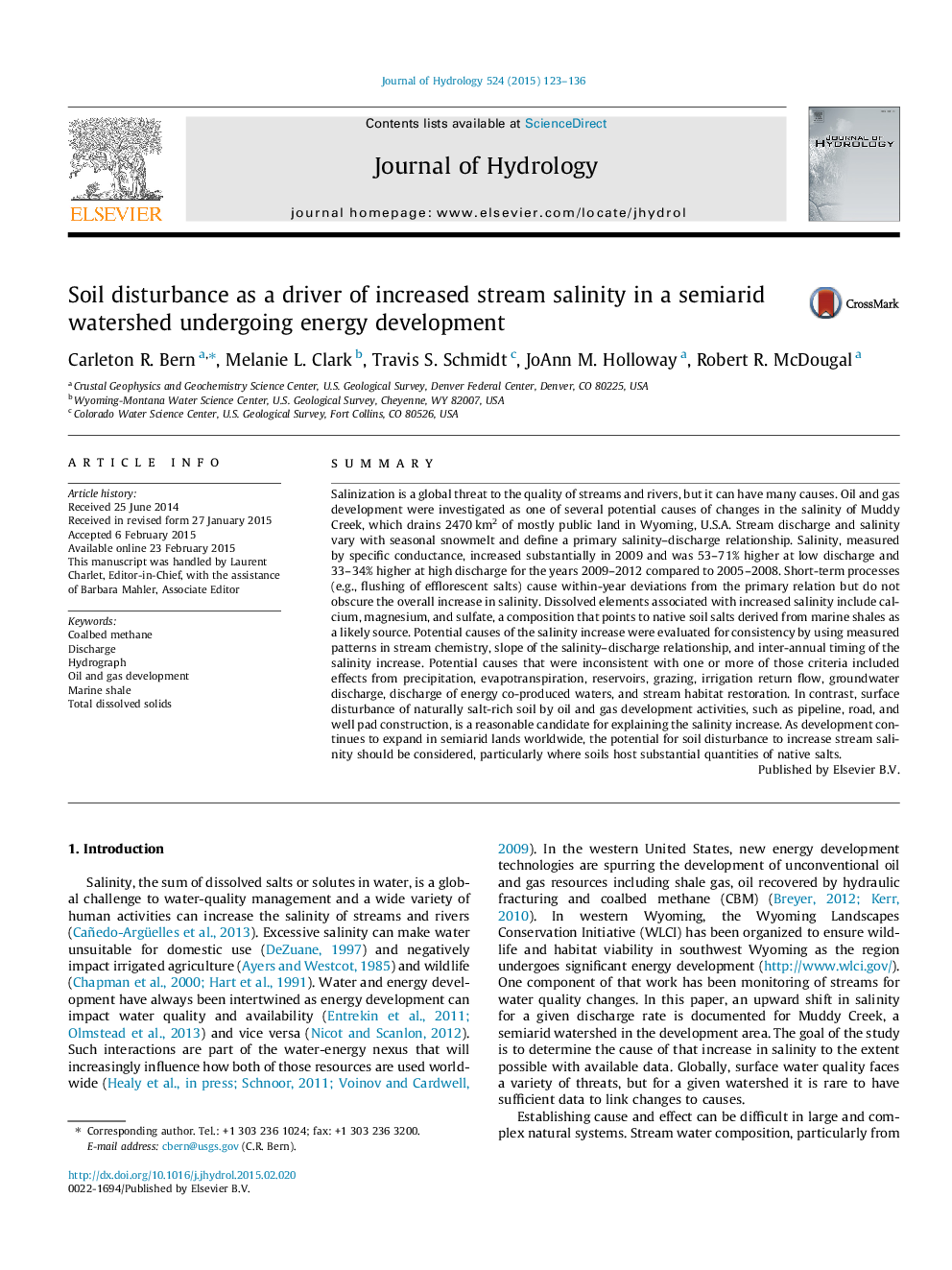| کد مقاله | کد نشریه | سال انتشار | مقاله انگلیسی | نسخه تمام متن |
|---|---|---|---|---|
| 6411399 | 1629926 | 2015 | 14 صفحه PDF | دانلود رایگان |
- We examined salinity-discharge relationships for a semi-arid watershed.
- Salinity had increased for a given discharge in 2009-2012 compared to 2005-2008.
- The watershed has undergone increased oil and gas development.
- The watershed contains soils with abundant native salts derived from marine shale.
- Disturbance of these soils is the best explanation for the salinity increase.
SummarySalinization is a global threat to the quality of streams and rivers, but it can have many causes. Oil and gas development were investigated as one of several potential causes of changes in the salinity of Muddy Creek, which drains 2470Â km2 of mostly public land in Wyoming, U.S.A. Stream discharge and salinity vary with seasonal snowmelt and define a primary salinity-discharge relationship. Salinity, measured by specific conductance, increased substantially in 2009 and was 53-71% higher at low discharge and 33-34% higher at high discharge for the years 2009-2012 compared to 2005-2008. Short-term processes (e.g., flushing of efflorescent salts) cause within-year deviations from the primary relation but do not obscure the overall increase in salinity. Dissolved elements associated with increased salinity include calcium, magnesium, and sulfate, a composition that points to native soil salts derived from marine shales as a likely source. Potential causes of the salinity increase were evaluated for consistency by using measured patterns in stream chemistry, slope of the salinity-discharge relationship, and inter-annual timing of the salinity increase. Potential causes that were inconsistent with one or more of those criteria included effects from precipitation, evapotranspiration, reservoirs, grazing, irrigation return flow, groundwater discharge, discharge of energy co-produced waters, and stream habitat restoration. In contrast, surface disturbance of naturally salt-rich soil by oil and gas development activities, such as pipeline, road, and well pad construction, is a reasonable candidate for explaining the salinity increase. As development continues to expand in semiarid lands worldwide, the potential for soil disturbance to increase stream salinity should be considered, particularly where soils host substantial quantities of native salts.
Journal: Journal of Hydrology - Volume 524, May 2015, Pages 123-136
